- News
- Reviews
- Bikes
- Accessories
- Accessories - misc
- Computer mounts
- Bags
- Bar ends
- Bike bags & cases
- Bottle cages
- Bottles
- Cameras
- Car racks
- Child seats
- Computers
- Glasses
- GPS units
- Helmets
- Lights - front
- Lights - rear
- Lights - sets
- Locks
- Mirrors
- Mudguards
- Racks
- Pumps & CO2 inflators
- Puncture kits
- Reflectives
- Smart watches
- Stands and racks
- Trailers
- Clothing
- Components
- Bar tape & grips
- Bottom brackets
- Brake & gear cables
- Brake & STI levers
- Brake pads & spares
- Brakes
- Cassettes & freewheels
- Chains
- Chainsets & chainrings
- Derailleurs - front
- Derailleurs - rear
- Forks
- Gear levers & shifters
- Groupsets
- Handlebars & extensions
- Headsets
- Hubs
- Inner tubes
- Pedals
- Quick releases & skewers
- Saddles
- Seatposts
- Stems
- Wheels
- Tyres
- Health, fitness and nutrition
- Tools and workshop
- Miscellaneous
- Buyers Guides
- Features
- Forum
- Recommends
- Podcast
TECH NEWS
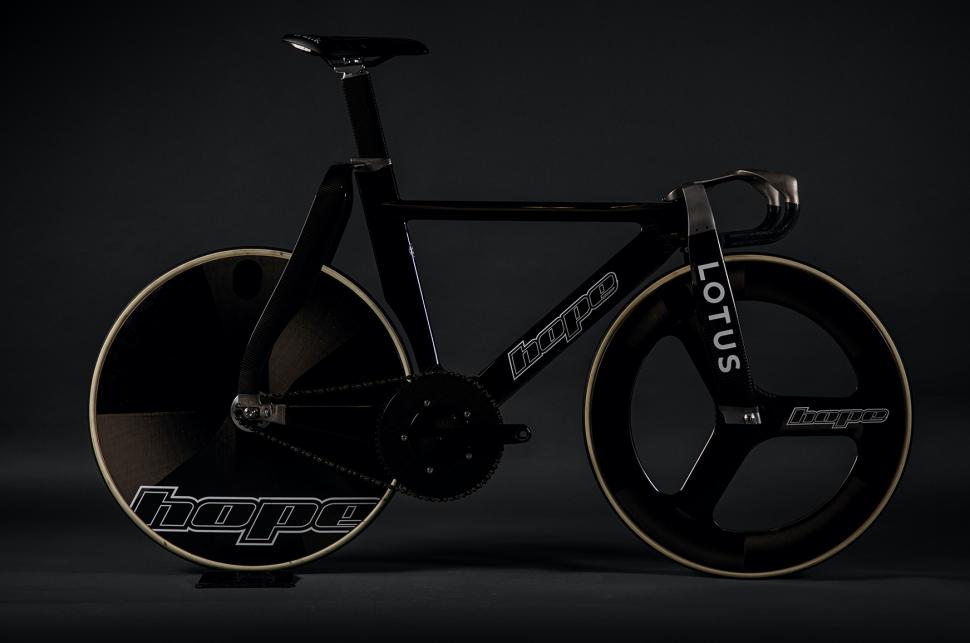 lotus hope track bike1
lotus hope track bike1The Lotus track bike is back! Hope Technology develops new Team GB track bike for 2020 Olympics
25 years after the Lotus 108 helped Chris Boardman to a gold medal, there’ll be a brand new Lotus being raced by Team GB at next year’s Tokyo 2020 Olympics.
This is the brand new HB.T and is the result of a collaboration between Hope Technology and Lotus Engineering with support from Renishaw, three British companies combining to provide the best possible equipment for the British track squad.
It’s a radical-looking bike with the insanely wide seat stays that join at the top of the extended seat tube and a similarly widely spaced fork design. It pushes right up against the UCI rules and it's been passed, there's a UCI approval sticker on the seat tube so they must be satisfied with it. It makes you wonder why no other track bike looks this way?
The forks and seat stays are 8cm wide and the work of English Institute of Sport, who were responsible for the original Team GB track bikes that were first introduced in 2002. The fork and handlebar were designed by Lotus using its considerable aerodynamic expertise, which Hope then integrated into the bike.
The wheels are also "revolutionary" but no details have been shared about them, other Hope's new manufacturing process resulting in an improved stiffness-versus-weight balance compared to regular disc wheels.
It’s has been wind tunnel tested in Southampton with both bike and rider, but it still needs to be approved b the UCI to qualify to be ridden at the 2020 Tokyo Olympics, which requires it to be ridden during the 2019/2020 Tissot UCI Track Cycling World Cup series by the GBCT before the end of 2019. It’ll have its first outing at the Minsk-Arena velodrome in Belarus this weekend.
Everything on the bike is new, with a big focus on getting the weight as low as possible. There’s no paint or filler on the raw carbon parts. Developing the new tube profiles and finessing the aerodynamic was helped by the 3D printing expertise of Renishaw to develop rapid prototypes. Everything about this bike is new – there has been no carryover of stress analysis, composite lay-up or component fitting the companies tell us.
Manufacturing of the carbon frame, fork and wheels was the work of Hope. The British company has invested in carbon tech in recent years with two mountain bikes launched that are made right here in the UK. For the track bike, it developed a new manufacturing process to enable it to reduce the weight to provide the best possible stiffness-to-weight ratio.
“We have created the frame using high modulus composites with fabric woven in UK, the in-house team has unrivalled engineering expertise with 30 years of composite experience and two Olympics behind them. Together we have refined the manufacturing method to make a superior product,” explains Ian Weatherill, Managing Director, Hope Technology.
On the return of an iconic name in British cycling history, Miguel Fragoso, Executive Director, Lotus Engineering says: “Lotus has always been at the very cutting edge of lightweight racing performance with its cars, and now – after 25 years away from cycling – we’ve collaborated with Hope to apply the same Lotus core values to this new track bike. We look forward to working with British Cycling as testing continues towards next summer’s Olympics.”
“It’s a dream team of engineering prowess,” adds Tony Purnell, head of technology for the Great Britain Cycling Team. “Hope Technology bring high-quality manufacturing standards and Lotus Engineering is renowned for lightweight design and outstanding aerodynamic efficiency. Both supported and advised by additive manufacturing experts Renishaw, who have ensured that Lotus and Hope have access to the most modern and fastest turnaround process from design to usable pieces.
“Following a terrific effort from our sponsors to bring this bike into reality, we have the task of evaluating the bike together with the English Institute of Sport to ensure it’s going to have the right performance in Minsk and Glasgow, and of course in Tokyo, and providing feedback to Hope and Lotus engineering teams.”
You’ll be able to see the bike for yourself if you attend the Rouleur Classic show this weekend starting Thursday evening.
And yes you’ll be able to buy one, with orders being taken from 1 January 2020. No price has been confirmed yet but we’ve asked. It won’t be cheap is our guess!
Who would love to see a comparison of the original Lotus 108 to this new one?
David worked on the road.cc tech team from 2012-2020. Previously he was editor of Bikemagic.com and before that staff writer at RCUK. He's a seasoned cyclist of all disciplines, from road to mountain biking, touring to cyclo-cross, he only wishes he had time to ride them all. He's mildly competitive, though he'll never admit it, and is a frequent road racer but is too lazy to do really well. He currently resides in the Cotswolds, and you can now find him over on his own YouTube channel David Arthur - Just Ride Bikes.
Latest Comments
- stonojnr 1 sec ago
crazy that his own brief describes it as "his long suffering partner" also how come the two blokes he collected from the snooker club to assist in...
- stonojnr 8 min 9 sec ago
but in cases where you report other cyclists close passes, you literally are the witness to it, not the victim ?...
- S.E. 11 min 27 sec ago
1. It's obviously more aerodynamic, even a small backpack or hydration pack can help, there are studies about this....
- stonojnr 16 min 17 sec ago
theres an attitude I encounter alot locally, and demonstrated in bucket loads by drivers on my commute home tonight, that cyclists shouldnt be on...
- FionaJJ 36 min 27 sec ago
When I was a student it was virtually unheard of for someone to have a car. It wasn't even that it was considered a luxury that almost no-one could...
- Keesvant 1 hour 35 min ago
If the chains snap that is lack of build quality or material.....
- Hirsute 2 hours 31 min ago
"Wisdom is better than weapons of war, but one sinner destroys much good."
- Jaijai 2 hours 56 min ago
His life was only worth shy of 7 years ,that's too lenient in every book .Let alone drugged up and leaving him to die
- webbierwrex 3 hours 1 min ago
I came here to basically write the same thing, the floating bus stop near me has a very narrow cycling lane between a very narrow pavement and a...
- AS52 3 hours 24 min ago
It wasn't an official consultation meeting - see my comment above.
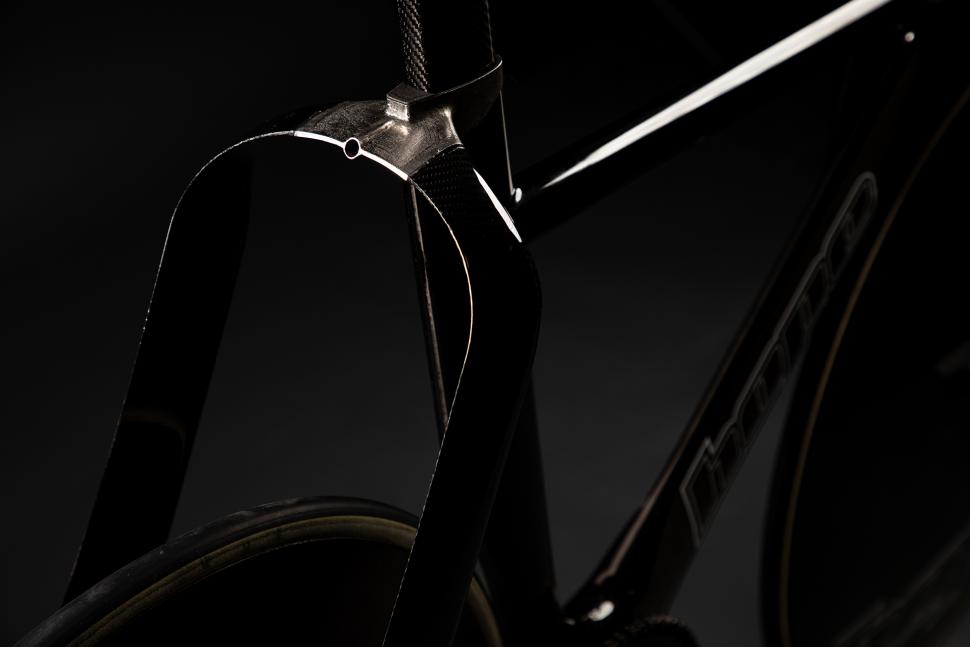
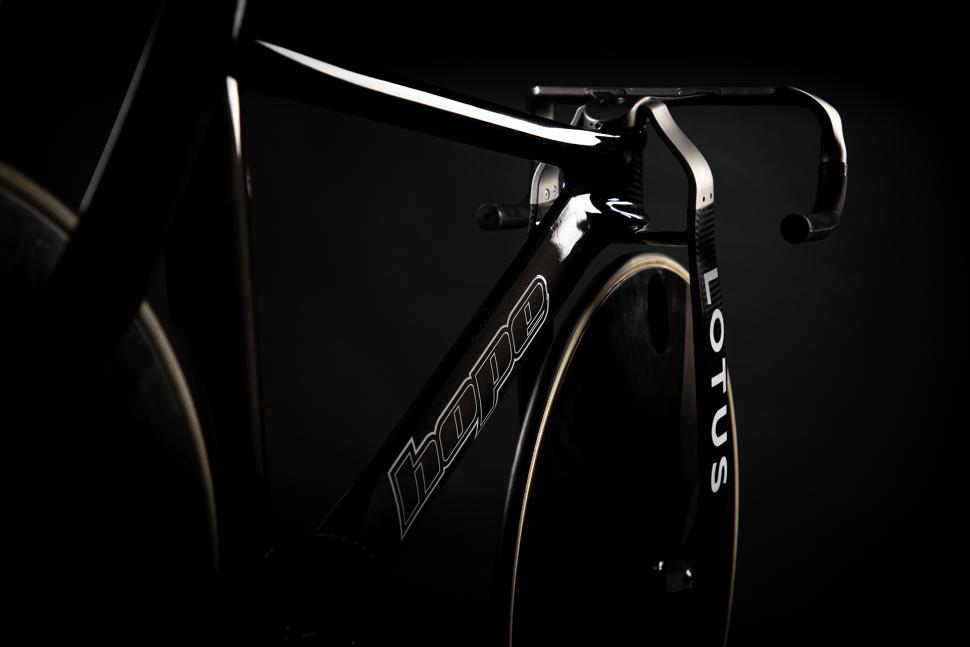
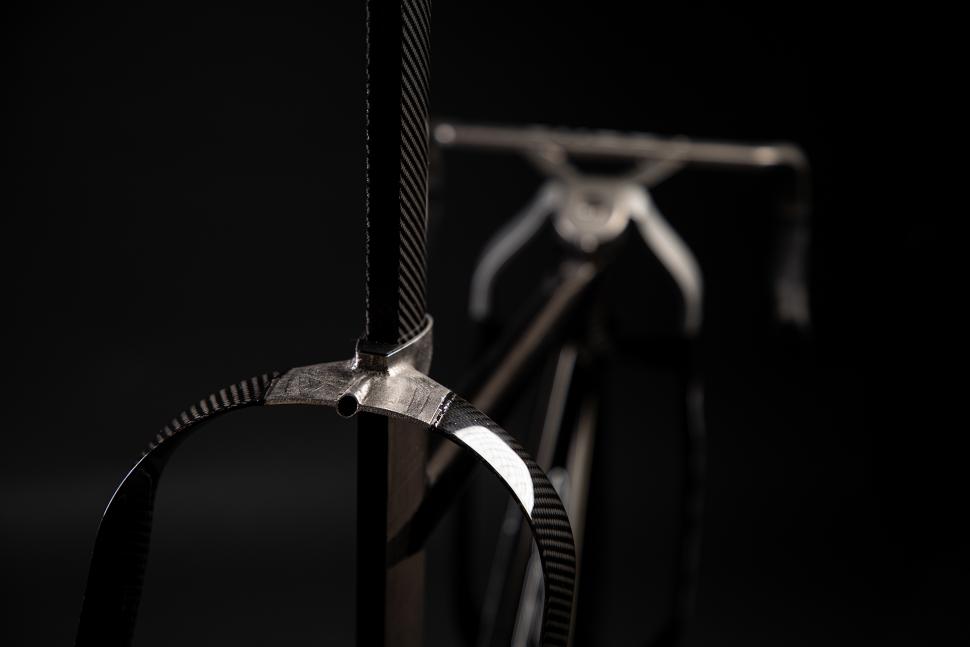
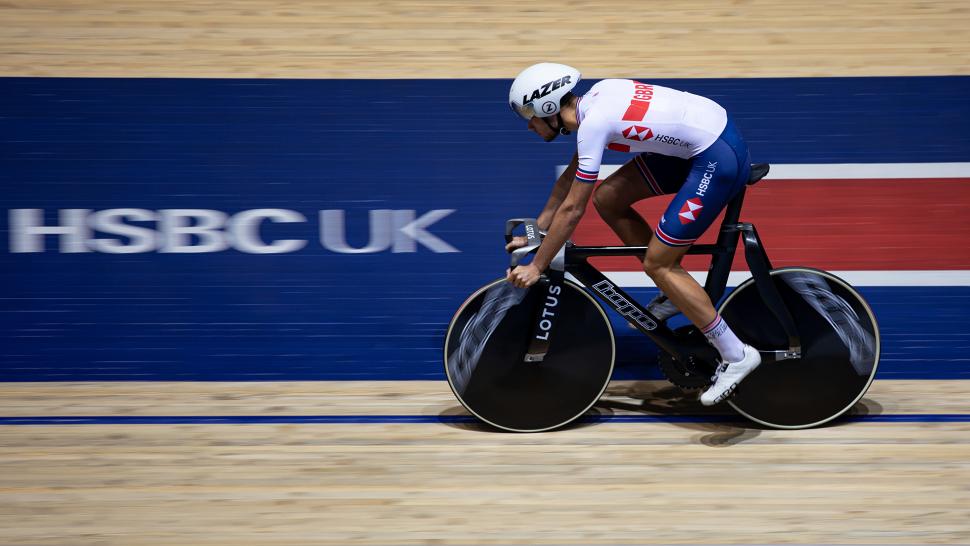
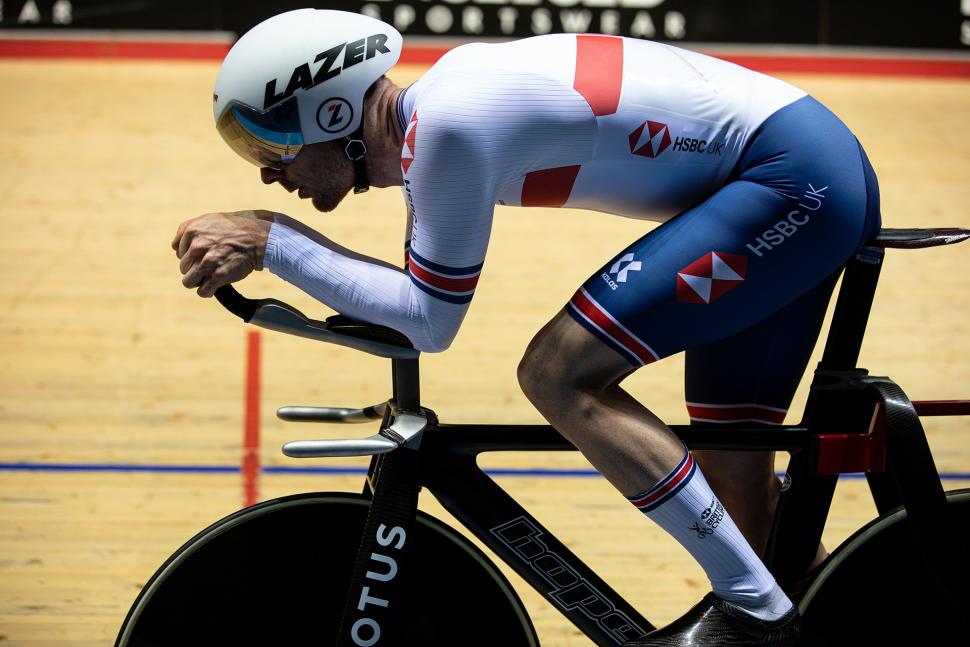
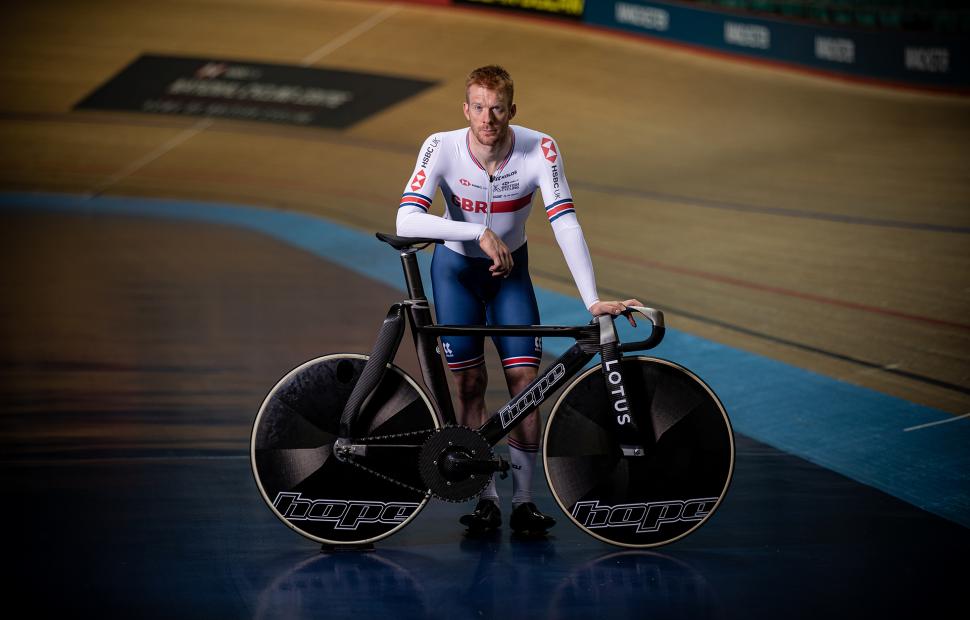
Add new comment
21 comments
Aren't all wheels...?
Only the extra round one.
Up and down the land there are a lot of people now trying to sweet talk their other halves..... "Darling (please feel free to insert your own term here) instead of buying me a christmas present now, why don't you wait until the January sales?"
Ta
"It pushes right up against the UCI rules and it's been passed, there's a UCI approval sticker on the seat tube so they must be satisfied with it."
but
"it still needs to be approved b the UCI to qualify to be ridden at the 2020 Tokyo Olympics, which requires it to be ridden during the 2019/2020 Tissot UCI Track Cycling World Cup"
so which is it?
Both, the design has to be sent off to the UCI to check it's within the regs, then samples of the bike sent for 3d scans to check it's the same as the drawings/CAD, this gives it the UCI approved sticker. It has to be raced/used at an event in this upcoming track season to be available for use in Tokyo by anyone, you cannot bring a bike out the month before Tokyo and then use it in Tokyo even if it has a UCI sticker.
Wide forks and skinny tyres. It looks like my 29er with its 700x35 tyres on.
All my mates took the michael. Whose laughing now?
Nevermind the frame, look at the size of that chain ring!
I love that they've come up with something very non traditional, a bit more exciting than the US team's gearing on the other side effort from the last olympic cycle.
Love it.. So great to see a brit collab put this together... I hope it shines.. get those museum piece orders in!
I think I understand the reasoning for the wide forks/stays - looking at the video, with the head-on shot the forks and stays are in-line with the riders legs, so could they be controlling the airflow across the rider and smoothing the turbulence left behind? Certainly reduces the 'frontal' area of both bike and rider, up to now most designs appear to be biased towards aero gains independently from the person sat on it, for example very thin handlebars that just sit in front of a relatively huge torso.
Just a thought - initial impressions.
That makes sense. Effectively forms a low pressure zone in front of the rider's legs, and then given track speeds potentially re-attaches the wake using the rear stays. Lovely vertical aerofoil shape formed as a result.
I don't buy that. The flow over those front forks will be virtually undisturbed by the time it reaches the riders legs.
Don't buy that either. The flow off a rider's legs, especially a muscly track sprinter is very turbulent and beyond laminarisation (is that a word?) and reattachment on short chord like those chainstays.
The prior commenter's observation about reduced frontal area seems much more credible to me.
By outrigging the rear seatstay behind the rider it effectively take them out the equation. It's like some aircraft wings, if fuel tanks are attached it reducers the efficiency of the tailplane control surfaces as air pressure is reduced. We've seen this before from Lotus 108 with the original Lotus like with its mono stays and Fork. Lotus don't do stays. I think the front forks work by reducing the low pressure wake by utilising the legs.
Looks fast.
Looks like a nice wind tunnel down the guts of a rolling missile with a high pressure hit aimed at both legs via the slip of forks thus allowing the stays to be efficiently used as defuses and slip a tail cleanly. Like you wrote bro, a low pressure infront of legs; back of forks. Slip pointing at legs, high pressure hitting, cooling legs, confused air from legs then defused by stays.
Looks fast. When foot at top dead centre air might pulse below. Marvelous how they achieve buildings of ideas.
Cruising around test riding at 40 or 50 clicks. Is that all. Lol. Kidding. Sustainable rates. Wow.
Old flat bar with panniers peaks flats at 40. Old slip streams a 3 inch wide flat wall. Lol.
You guys rock. Nice looking bike.
Fast is up yet quick is getting there. Is she quick?
Wow. Clearly designed to separate the flow around the wheel from the flow around the stays. Also wondering if the flat sections on the forks and seat stays will produce greater stability? Is stability even desirable on a track bike?
Oh no the industry told me lowered seat stays were more aero so I replaced all my bikes and now this one has higher seat stays I'm so confused and I've got no money left
3D printed Ti lugs from Renishaw fitted to carbon tubes? Is this an Atherton bike?
It looks like a mean piece of engineering, and a welcome bit of good news in the Track cycling world. I'm still bitter on behalf of HUUB Wattbike and BEAT and the likes
Yay, a gravel track bike!
Fat gap seatsays and forks, which taper in severely at the hubs, it's one hell of a "look"
I wonder if it will ever travel over to the road bike world?
I for one quite like the wide gaps, will be ideal for commuters who need to fit mudguards....now I wonder if it comes with rack eyelets ;P
Protest from the French in trois, deux, un...